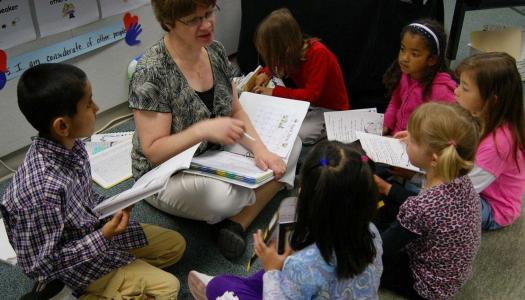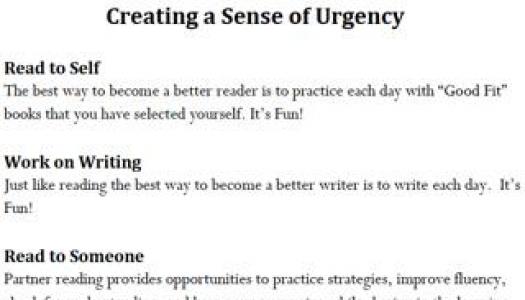Purposeful Work
Join Our Community
Access this resource now. Get up to three resources every month for free.
Choose from thousands of articles, lessons, guides, videos, and printables.
 If you don’t know where you are going, any road will get you there.
If you don’t know where you are going, any road will get you there.
—Lewis Carroll
A teacher using Daily 5 or Math Daily 3 introduces expected behaviors using the 10 Steps to Independence. This starts with (1) identifying what is to be taught, and (2) setting a purpose/ creating a sense of urgency. We are intentional when we provide students a purpose for learning, because it helps them understand why, and that leads them to view the task as important and worthy of time and effort. Simply put, when students understand the purpose of a lesson, they learn more (Marzano, 2009).
Teachers have objectives for each lesson they teach. To best meet these objectives, students should know what they are expected to learn and why. Students deserve an answer to the question “Why are we doing this?” Teachers can and should provide that answer.
How do we best establish and communicate a clear purpose for learning? We need to communicate clear expectations that support the content being taught. Consider these two examples:
1. “Today we are going to create an I-chart for what it looks like and sounds like when students Read to Self. The first behavior we notice when someone Reads to Self independently is that they get started right away. The second behavior we notice is . . . ”
2. “Today we are going to learn what it looks like and sounds like when we Read to Self independently. It is important for us to learn these behaviors because Read to Self helps us become better readers and it is so much fun. The more time a person spends reading, the better reader they become. The first behavior we notice when someone Reads to Self is that they get started right away. The sooner a person gets started, the longer they have to read, which helps them on their journey to becoming a better reader.”
The first statement is clear about what the students will be doing, but it doesn’t communicate the purpose or meaning of the activity.
The second example communicates the purpose for the work and answers the question “Why are we doing this?” It is both clear and contains the purpose, communicating to students the expectations and the reason these expectations are important.
When we let students know where we are going and why, we provide a road map for success.
Reference:
Marzano, R. J. (2009). Designing and teaching learning goals & objectives. Bloomington, IN: Solution Tree.






